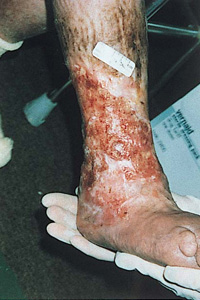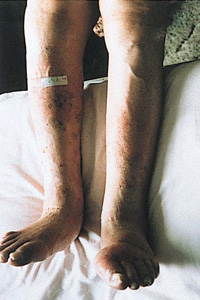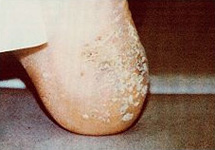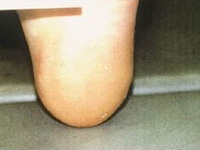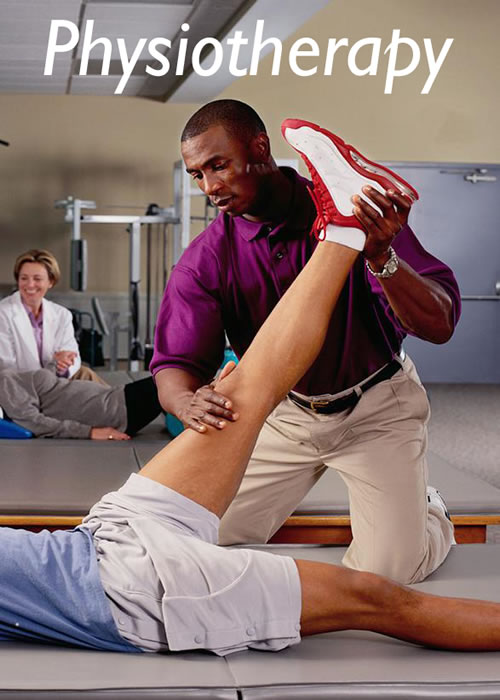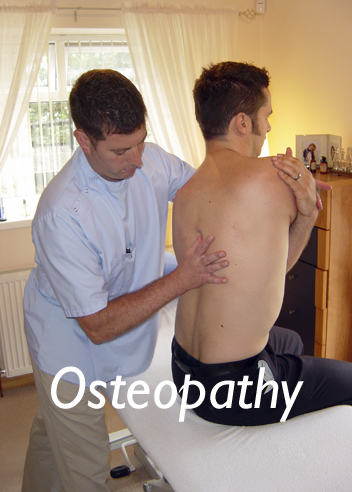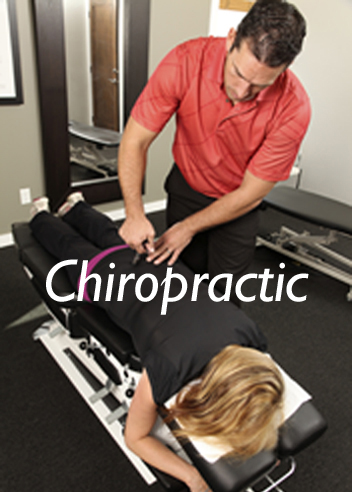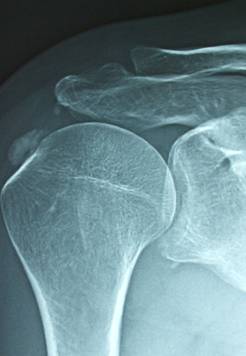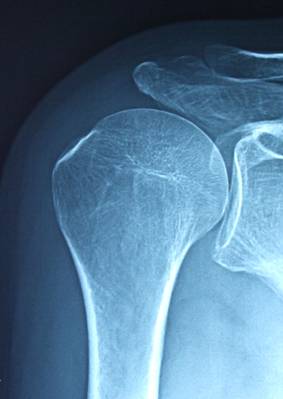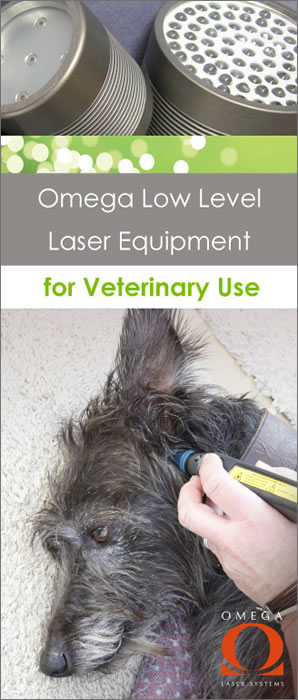
![]()
![]()
![]()
![]()
![]()
![]()

|
Clinical Applications Overview
Laser therapy is effective across a wide range of conditions and therefore used in a variety of health care and veterinary disciplines. There is consequently a large body of research to be found on the clinical effects of low level laser both in vitro and in vivo. This is spread across many fields and many nations, with work from Russia, Israel, Italy, Spain Japan, Denmark and Australia amongst others. In the UK, a large volume of controlled research has been carried out in centres of excellence such as Guy's Hospital Tissue Repair Unit, Oxford University, Ulster University, Cambridge Military Hospital and Northampton School of Podiatry. To facilitate access to relevant information, we have drawn together some of the material and references, grouped here by discipline. We do hope that you find this helpful but don’t hesitate to contact us if you have a particular enquiry since this is by no means exhaustive listing. The library at Omega Laser is extensive and relates to all areas of clinical research and its relevance to the practising clinician. Many of our associates who are currently involved in the ever-increasing areas of low level applications contribute to this growing database of information, and we always welcome news of interesting new work that might be usefully shared.
Podiatry & Chiropody
With widespread recognition of the reliable benefits, we are seeing rapid growth in the use of low level lasers in the field of Podiatry. The mounting clinical evidence of Low Level Laser Therapy’s (LLLT’s) effectiveness on a diverse range of conditions combined with the reassurance of our commitment to excellent after-sales service is leading podiatry clinics and departments across the country to choose Omega laser systems . Podiatry is perhaps the discipline with the highest proportion of conditions for which LLLT is relevant and highly effective. With increasing take-up, the therapy is now moving from being a point of difference in terms of podiatry services offered, to being established as part of the norm in a number of areas. Departments and clinics without laser increasingly risk comparatively longer resolution times with more recurrent treatments resulting in poorer service and cost-efficiency across a range of applications. Typical applications for podiatrists and chiropodists include: Leg Ulcers Laser therapy is regularly used in the National Health Service and private clinics for fast resolution of leg ulcers with improved tensile strength of repaired tissue. Laser can frequently speed up the granulation and epithelialisation phase or, in ulcers that are healing poorly or not at all, activate the healing process. Low power laser improves micro- blood circulation and that of the lymph system, activates anti-oedematous processes, promotes cellular regeneration and inhibits inflammation. Leg Ulcer Case Study History Treatment
Outcome Clinician
The
Use of Low Level Laser Therapy in Diabetic and other Ulcerations.
The
cases illustrated concern the two-month trial period from January
to March 1989. The regime was similar in all cases. The ulcers
were debrided, and followed by application of laser. The pencil
probe (660nm) was used at 2cm intervals around the periphery of
the ulcer, and the cluster probe for two minutes over the body
of the ulcer, all at a setting of 20Hz. The energy density absorbed
is related to the size of the ulcer. Using the pencil probe for
every twenty seconds, 2J/cm2 is delivered, and with the cluster
probe for each two minutes exposure, approx 5.5J/cm2 is delivered.
Ulcerated Wound Treatment References Phototherapy
Promotes Healing of Chronic Diabetic Leg Ulcers that Failed to
Respond to Other Therapies (2009).
Minatel, D.G., Frade, M.A.C, Franca S.C. and Enwemeka, C. S..
Lasers in Surgery and Medicine 41:433-441. Multiwavelength Low Reactive Level Laser Therapy (LLLT) as an injunct in malignant ulcers: Case Reports. (1993) M Dalvi Humzah FRCS Dept of Surgery and Radiotherapy, Royal Marsden Hospital, Sutton Surrey. Costas Diamantopoulos Bsc, Dept of Plastic Surgery Queen Mary's Hospital London. Mary Dyson PhD Tissue Repair Unit Dept of Anatomy United Medical and Dental School Guy's and St Thomas' Hospital London. by John Wiley & Sons Ltd. ISBN: 0898-5901/93/040149-04. The use of Infrared Laser Therapy in the treatment of Venous Ulceration. (1990) M E Sugrue, FRCSI, J Carolan, Bsc E J Leen, MB, T M Feeley, FRCSI, D J Moore, FRCSI, G D Shanik, DFCSI, St James' Hospital Dublin Ireland. Annals of Vascular Surgery: Vol 4, No 2. Combined Phototherapy/Low Intensity Laser Therapy in the management of Diabetic Ischaemic and Neuropathic Ulcertaion: A Single case series incestigation. (1998) K M Lagan – Rehabilitation Sciences Research Group, University of Ulster at Jordanstown, Northern Ireland. G D Baxter School of Podiatry, University of Central England, Birmingham. R L Ashford, School of Podiatry, University of Central England Birmingham. Laser Therapy by LT Publishers UK Ltd. Low Level Laser Therapy - Trial by District Nurses. January - March 1997. Frances McNulty Bsc RGN RMN DN CERT - Waterloo Medical Group Northumberland. Issue 12 July 1997 Scottish Nurse pg 42-45.
Verruca is a complex treatment case but can respond very well to laser therapy. In terms of effectiveness, in a properly controlled 1996 double blind trial, 60% of verrucae cases were resolved as opposed to 17% in the placebo group. Laser therapy is no less effective overall than any other treatment but equally will not be fully successful in every case. However, it has a number of advantages over alternative treatments and no symptomatic disadvantages. It can also be beneficially used in conjunction with cryo-surgery. Not only is the treatment pain-free but it actually delivers pain relief, is non-invasive and is without unpleasant side effects, making it particularly well received by patients. There is never tissue damage or scarring. In fact, it can help reduce scarring from previous treatments. Laser therapy does not rely on patient compliance, other than appointment attendance, with no post-treatment complications and it is ideal for the treatment of children and nervous patients. The number of treatments required varies case by case, with some resolving in one session but others requiring, at the extreme, 10 treatments.
Mosaic Verrucae Case Study History
Treatment
Verrucae Research Abstract Verrucae
Pedis: Evaluation of a method of eradication using class 3B (low
level) Laser Therapy – A Double blind Clinical Study. Warren
A Turner Bsc (Hons) DPodM MChS lecturer, then of Northampton School
of Podiatry, now of University of Derby.
Verrucae Treatment References Turner
W.A. Veruccae Pedis: Evaluation of a method of eradication using
class 3B (low-level) laser therapy – a double blind clinical
study. Unpublished
(submitted in 2002 to American Society of Lasers in Surgery &
Medicine).
Laser therapy is particularly effective in the early stages of inflammation of the Achilles tendon and sheath when it is recommended as a sole measure. Treatment would involve the lower calf muscle area plus any tender trigger points being lasered every other day for a couple of weeks. Helpful muscle relaxation is best achieved by also lasering relevant acupuncture points. With more acute cases, although some can be brought to resolution with the optimisation of the healing processes, in many laser therapy will act as a complementary measure and be used for drug-free pain management and reduction of inflammation.
With its ability to reduce inflammation and ease pain, laser therapy achieves good results in the treatment of plantar fasciitis where it stimulates the fibroblasts for a faster regeneration of connective tissue structures in the tendon. Treatment generally involves direct application to the heel with an infra-red probe to be repeated every 2-3 days for 2-3 weeks.
Progress of example Verruca treatment using Omega Lasers courtesy of Rhona Darcy
Lasers in Physical Therapy Optimising soft tissue repair and providing pain relief, laser therapy is a well-used modality for those disciplines focused on physical therapy. Both acute and chronic conditions can be treated successfully. Low Level Laser can work synergistically with manipulation and has fewer contraindications than ultrasound therapy - with LLLT the clinician can treat over plates, pins and patients with pacemakers. Therapeutic lasers are also effectively used on trigger points in musculoskeletal treatments and can provide drug-free pain relief, being of particular aid in the treatment of arthritic conditions and neuralgic pain. Healed tissue which has been treated with laser has been shown to have improved quality and tensile strength, thus minimising adhesions and scarring. Even pre-existing scar tissue has shown improvement after laser treatment. Please Click below for description of the package recomended to your specific discipline
Arthritic
Conditions With Rheumatoid arthritis, laser therapy influences small joints directly and large joints indirectly. It strengthens the antiphlogistic processes and depresses the autoimmune response. The effects in the early stages of the condition can be impressive, but with chronic conditions, although pain is eased on treatment, longer treatment courses measured in months are necessary in order to make a substantive differences to the condition. It has been reported that 6 months can be a turning point. It also appears that adding laser therapy to prescribed medication gives improved results over medication alone. With gout, attacks can be curtailed and the symptoms reduced. Laser therapy inhibits inflammation, eases pain, reduces swelling and joint tenderness. In cases of osteoarthritis, laser therapy may slow down the degenerative process as well as ease acute symptoms. In the case of large joints such as the hip joint, the therapeutic effects of laser are brought on by an improvement and strengthening of the surrounding tissues. Laser therapy activates the microcirculation and the metabolism, prevents oedema and triggers anti-inflammatory processes in the synovial membrane.
Tendonitis Shoulder Tendonitis Research Abstract
Rotator Cuff Calcific Tendonitis Case Study On the 16th June, a 50 year old female patient first attended the laser center complaining from a bad pain in right shoulder. The pain increased with arm movement. An X-ray was taken of the right shoulder . Radiographic diagnosis was calcific tendinitis in the right shoulder joint. (See radiography image below.)
As
a first step we undertook a low laser treatment shedule for calcific
tendinitis.
The
patient returned on the 26th of November the following year, some
sixteen months later and an X-ray of the shoulder was taken for
the record. (see image avoce.) The radiographer's diagnosis from
this was that there was no calcific tendonitis in the shoulder
joint. Epicondilitis
Carpel
Tunnel Syndrome For more long-standing conditions it is most useful as a complementary measure. If surgery has been undertaken, then laser therapy's ability to promote wound-healing and again address pain both through nociceptor suppression and endorphin release, make it an ideal therapy for optimal post-operative recovery. Although each case will differ depending on the individual and the stage of the condition, in general treatment every 3 or 4 days would be advised to a total of approximately 10 sessions.
Laser
Therapy in Dentistry and Maxiofacial Work Practitioners find the removable autoclavable tips on Omega's equipment of particular use considering the cross-infection issues for treatments in the mouth. Amongst the applications in this field are: Apthous ulcers Apthous Ulcers respond well and often remarkably quickly to laser therapy. When treatment with red-light is applied directly to the site, patients report reduced discomfort and the ulcer can be gone within a day.
Although
easily available products are now very effective in controlling
everyday dental sensitively, painful necks of teeth often respond
very well to low level laser treatment resulting in reduced pain,
whether a slight sensation or from more seriouscases of pulpitis.
Treatment involves lasering the tooth neck up to the gum line
and the coronary pulp. Laser treatment has been found to be very helpful in reducing the pain often associated with newly inserted orthodontics. Lasering the areas likely to be pressured by the apparatus, immediately on fitting, can both delay and reduce any resultant pain. Accelerated bone regeneration has also been demonstrated following laser therapy, aiding the reestablishment of new dental positioning.
Healing following flap operations can be greatly improved in terms of both speed and quality with laser therapy. Lasering within the operative wound and over the sutures increases capillary, fibroblast and osteoblast proliferation, bettering the tensile strength of the healed tissue, reducing post-operative pain and bleeding and enhancing bone regrowth.
Low level laser has a range of applications relating to skin. It stimulates high quality new tissue growth, its cellular effects discourage scar tissue build up and with it can smooth and relax existing scarring, lessening redness for better cosmetic effect. Good results have also been achieved with laser therapy for skin regeneration following facial ‘dermabrasion’, where the quality and tensile strength of the fresh tissue growth is optimised by treatment. It is effective to differing degrees across a number of skin conditions such as acne, psoriasis and eczema, both in terms of reducing bouts and improving previous scarring. There appear to be both anti-bacterial and anti-viral effects since both acne and the herpes simplex virus are effectively treated with laser therapy. Other cosmetic applications include supporting strong hair growth by encouraging metabolism in the hair root and activating the arterial and lymphatic microcirculation; reducing puffiness around the eyes through laser's ability to optimise lymphatic microcirculation and reduce swelling; and clinics report success using laser to minimise fine lines – little formal research has been published on these latter applications but a number of users are now recording their clinical evidence in a more formal fashion so we expect more soon. Cold sores - Herpes simplex Laser therapy is particularly effective for cold sore treatment in the early stages of an attack. If applied as soon as the first tingling occurs, the outbreak can often be averted. Treatment once the sore has materialised is still generally effective with symptomatic relief and reports of fewer subsequent attacks, especially in terms of the precise location on the lips.
Good results are achieved with laser therapy treatment for cases of acne, both acute and chronic. It appears to reduce sebaceous gland production, it prevents scarring and encourages skin regeneration. Existing acne scarring can also be improved. With Psoriasis and Eczema, traditional treatments prove more effective when low level laser is introduced as a complementary measure.
Results of facial resurfacing, whether undertaken chemically or by high power laser, can be optimised by the additional use of low level laser to aid the skin regrowth and minimise possible complications such as pain, erythema, infection rate and itching. Here LLLT is part of a successful wrinkle-reduction, rejuvenating process but despite anecdotal reports, no objective evidence of wrinkle-reduction from laser therapy alone is available so far, so Omega would not recommend equipment purchase for that application alone.
Practice nurses can treat a whole range of conditions cheaply and locally with laser therapy. Whether patients need help overcoming addiction to smoking, treatment for herpes simplex and acne, ulcerated wounds, rhinitis, arthritic pain relief and even stress management. Laser therapy is effective, drug-free, non-invasive, pain-free and without unpleasant side-effects. The use and cost of NSAIDs can be dramatically reduced for a number of conditions and in several, such as chronically ulcerated wounds, conditions can be completely resolved using laser therapy. Example applications in this field are: Shingles & Post Herpetic Neuralgia More common in older patients, Shingles or Herpes Zoster can cause considerable pain and distress. One can often expect nerve damage and associated pain for an extended period after the initial attack. Laser therapy can not only be used to succesfully reduce pain in the acute stages but also to treat and to limit the onset of the neuralgia and associated problems. Precise mechanisms of how laser achieves the effects are not conclusively proven, but there is considerable research evidence of nerve regeneration resulting from laser therapy which is consistent with the effects achieved with post herpetic neuralgia.
Patients
who present with varicose ulcers or non-healing bed sores are
likely to be in a compromised immune state and can therefore expect
to benefit greatly from laser therapy since it is in such suboptimal
conditions that the laser really makes a difference in terms of
wound-healing. The effects of low level laser on wound-healing
have been thoroughly researched in vitro, through animal studies
and in humans. It is an ideal modality for treating such conditions
providing as it does localised pain relief and mood enhancement
via endorphin release as well as healing stimulation . To treat for rhinitis, the inside of the nose is irradiated directly with red-light laser. Laser therapy normalises the microcirculation in the nasal mucuous membranes, reducing their swelling. It is usually effective for all types of rhinitis, allergic or otherwise. Sinusitis is similarly addressed but in addition to lasering via the nostrils, facial and oral points are included. Response is best in acute rather than chronic sinusitis.
Laser therapy delivers pain-relief and addresses the inflammation in arthritic conditions. With Rheumatoid arthritis, laser therapy influences small joints directly and large joints indirectly. It strengthens the antiphlogistic processes and depresses the autoimmune response. The effects in the early stages of the condition can be impressive, but with chronic conditions, although pain is eased on treatment, longer treatment courses measured in months are necessary in order to make a substantive differences to the condition. It has been reported that 6 months can be a turning point. It also appears that adding laser therapy to prescribed medication gives improved results over medication alone. With gout, attacks can be curtailed and the symptoms reduced. Laser therapy inhibits inflammation, eases pain, reduces swelling and joint tenderness. In cases of osteoarthritis, laser therapy may slow down the degenerative process as well as ease acute symptoms. In the case of large joints such as the hip joint, the therapeutic effects of laser are brought on by an improvement and strengthening of the surrounding tissues. Laser therapy activates the microcirculation and the metabolism, prevents oedema and triggers anti-inflammatory processes in the synovial membrane.
Low Level Laser for smoking cessation has been in use since the 1970’s in the UK and Canada and has recently seen an explosion of clinics in the US, South America, Australia, South Africa, Middle and Far East. Treatment traditionally employs use of non invasive, non thermal laser to stimulate acupuncture points, total treatment time around 15 minutes for a maximum of 4 treatments over 14 days. The patients experience a reduction in withdrawal symptoms and while counselling is encouraged as part of the clinical procedure and for best results, research has still shown significant results in double blind studies with application of the laser alone. There is no lingering nicotine addiction and are no side effects. The mechanism underlying the effects of laser therapy is continuing to be explored but amongst the cellular and systemic effects observed, research has shown effects on endogenous production of endorphins. This was independent of acupuncture point stimulation, which has itself demonstrated such increases in endorphin release. Whether laser acupuncture is effective for smoking cessation because of the acupuncture effects alone or owing in part to specific independent factors has not been established. Despite many successful clinics producing a useful volume of clinical data, the published evidence from controlled clinical trials to support the efficacy of the treatment has until now been limited. Dr. Catherine Kerr and Paul Lowe of the Middlesex University have recently published a controlled, double blind study using an adult sample group of smokers who have stated an intention to give up. This demonstrates an immediate stop smoking rate of 79% with no ongoing nicotine use and at 6 months a minimum of 55% of the original treatment group were still not smoking – this with no ongoing nicotine or substitute usage. These results compare favourably with NRT and other substitute therapies. Indeed the research and clinical data available on the efficacy of laser therapy has been based upon total cessation at 3, 6 and 12 months, not always available for other forms of therapy once the treatment has ceased.
Having low level laser equipment presents a number of benefits in terms of day to day acupuncture practice, as well as adding a whole new but related capability in terms of the stimulation of cellular healing mechanisms and analgesic effects of direct laser therapy. Laser Acupuncture involves low level laser beams being used to stimulate acupuncture points. Laser is used both as a non-needle alternative and as a medium in its own right with its own distinct energising characteristics, extending the range of acupuncture treatment options available. Laser is a particularly useful modality for needle-phobic clients and children, being aseptic, painless and having relatively short treatment times. It is also a very useful modality in veterinary practice where needling a restless animal can be difficult and is perhaps best-used in the equine field, where practitioners often combine the direct healing of laser therapy with laser acupuncture for optimum treatment of musculoskeletal injuries. It
is likely that the laser acts partly through the Wei system as
the concentration of the light is highest just under the skin.
This would be consistent with the effective use of low level laser
on ‘trigger’ points (generally regarded as equivalent
to ‘ashi’ points in traditional Chinese medicine) increasingly
undertaken by health care professionals without extensive acupuncture
knowledge. Physical therapists find this useful in the treatment
of a number of musculoskeletal conditions, especially tendon disorders,
where painful trigger points are especially prevalent. For the trained acupuncturist, low level laser acupuncture can be applied across almost the full gamut of conditions that are treatable with needles. Only in cases where there is excess in the system, might laser acupuncture not be recommended due to its particular energising nature. The range of applications for laser therapy including laser acupuncture is clearly extremely broad, but notably it will include treatment of soft tissue injuries, pain, wound- and bone-healing plus lymphatic and circulatory disorders as well as addiction and stress treatment particular to the laser acupuncture use. Integrating laser into one’s acupuncture practice is straightforward and increases the potential for highly personalised solutions delivering benefits to acupuncturist and client alike. "...using
traditional acupuncture principles, the laser has enhanced my
practice by allowing me to offer an aseptic, non-invasive and
painless alternative to conventional needles - I would not be
without it."
Laser therapy has been used successfully in the treatment of smoking and drug addiction. The effect is to greatly reduce or eliminate the cravings. The treatment protocols are based on acupuncture principles, using laser light to stimulate the acupuncture points. However the precise mechanisms that create the effects are complex. Although both traditional acupuncture and laser therapy have each independently demonstrated increased endorphin and seratonin release, there are a number of theories and work on neuro-transmitters is suggesting new and interesting possibilities. A recently published ‘double-blind’ smoking cessation study showed sustained cessation rates far in excess of those claimed by nicotine replacement therapies. Additionally, the laser therapy ex-smokers have overcome the nicotine addiction as well as the smoking habit, unlike nicotine replacement ex-smokers who can struggle with this residual problem and its cost. Clinics are also using laser acupuncture for treating eating addiction as part of weight control programmes, and for stress management, but it is too early for a good body of evidence to have been developed on this. Key applications are: Smoking Cessation Low Level Laser for smoking cessation has been in use since the 1970’s in the UK and Canada and has recently seen an explosion of clinics in the US, South America, Australia, South Africa, Middle and Far East. Treatment traditionally employs use of non invasive, non thermal laser to stimulate acupuncture points, total treatment time around 15 minutes for a maximum of 4 treatments over 14 days. The patients experience a reduction in withdrawal symptoms and while counselling is encouraged as part of the clinical procedure and for best results, research has still shown significant results in double blind studies with application of the laser alone. There is no lingering nicotine addiction and are no side effects. The mechanism underlying the effects of laser therapy is continuing to be explored but amongst the cellular and systemic effects observed, research has shown effects on endogenous production of endorphins. This was independent of acupuncture point stimulation, which has itself demonstrated such increases in endorphin release. Whether laser acupuncture is effective for smoking cessation because of the acupuncture effects alone or owing in part to specific independent factors has not been established. Despite many successful clinics producing a useful volume of clinical data, the published evidence from controlled clinical trials to support the efficacy of the treatment has until now been limited. However, Dr. Catherine Kerr and Paul Lowe of the Middlesex University have recently published a controlled, double blind study using an adult sample group of smokers who have stated an intention to give up. This demonstrates an immediate stop smoking rate of 79% with no ongoing nicotine use and at 6 months a minimum of 55% of the original treatment group were still not smoking – this with no ongoing nicotine or substitute usage. These results compare favourably with NRT and other substitute therapies. Indeed the research and clinical data available on the efficacy of laser therapy has been based upon total cessation at 3, 6 and 12 months, not always available for other forms of therapy once the treatment has ceased.
The scientific documentation of laser therapy in the field of veterinary medicine is extensive – Tuner & Hode (2002) identified over 1000 animal studies the majority of which are experimental. Animals and horses in particular are more sensitive than humans to light and are also not prone to placebo effects, so the many positive scientific studies published attest to the effectiveness of laser therapy across a wide range of conditions. Currently laser therapy is perhaps most commonly utilised with competition animals where the benefits of faster recovery, and so shorter lay-off times, are particularly attractive to owners and trainers. However, the therapeutic benefits are applicable to the full gamut of animals. From mastitis in cows to bumblefoot in budgies the range of conditions which laser therapy can helpfully address is extensive. Perhaps the most dramatic results are related to improved wound healing, especially where the patient is challenged either through severity of injury or already depleted health. Wounds can often be seen to visibly alter during the initial treatment. Also, of particular note to those trained in acupuncture is the non-needle point stimulation possible with an Omega laser system. Treating points in series with laser stimulation makes acupuncture a practical option with many more animal patients and permits those who are not veterinary surgeons to treat in this way.
Download the pdf brochure for a full detailed list of applications and uses.
Laser Therapy Publications Please
select the type of publication you are interested in:
|
![]()
![]()
![]()
![]()
![]()
![]()
![]()
![]()
© Steven Warren - Light Therapy UK. All rights reserved 2005 - 2016.
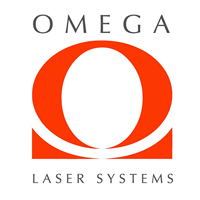 Low
Power Laser Systems
Low
Power Laser Systems

